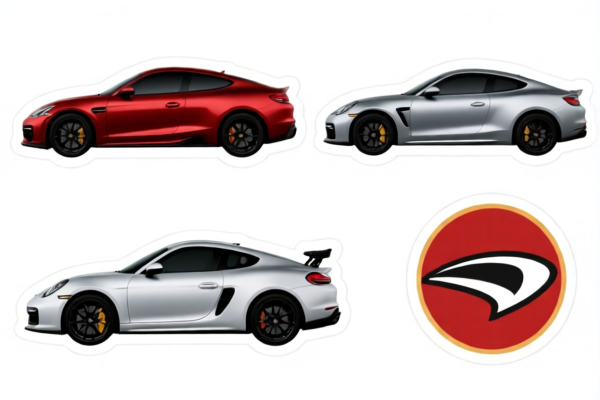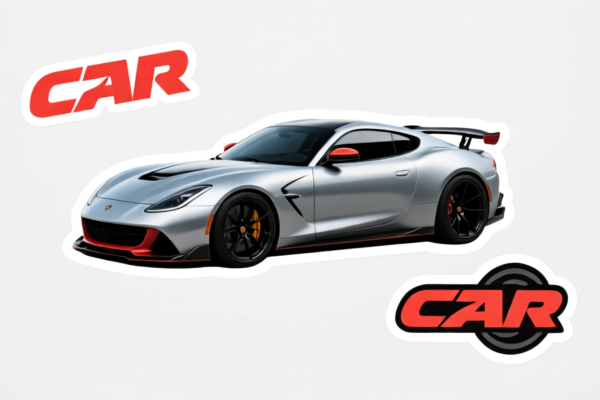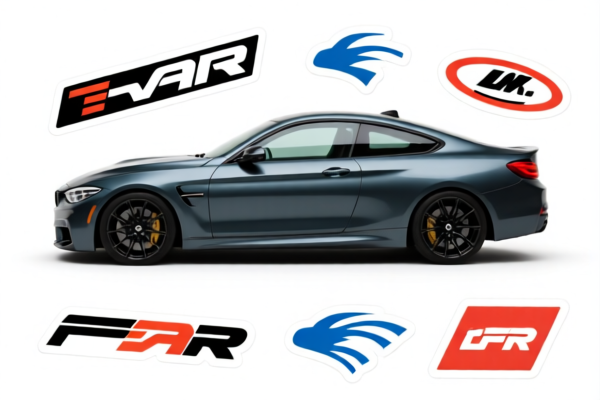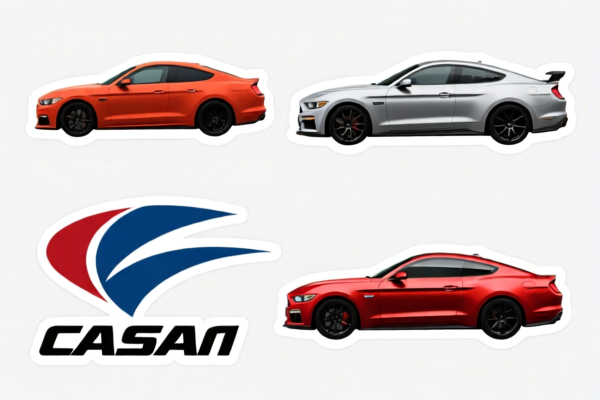| HS Code | Official Doc | Tariff Rate | Origin | Destination | Effective Date |
|---|---|---|---|---|---|
| 3214905000 | Doc | 58.25% | CN | US | 2025-05-12 |
| 3214901000 | Doc | 55.0% | CN | US | 2025-05-12 |
| 3212100000 | Doc | 59.7% | CN | US | 2025-05-12 |
| 3212900050 | Doc | 58.1% | CN | US | 2025-05-12 |
| 3926909989 | Doc | 42.8% | CN | US | 2025-05-12 |
| 3926904000 | Doc | 32.8% | CN | US | 2025-05-12 |
| 3919905060 | Doc | 60.8% | CN | US | 2025-05-12 |
| 3919901000 | Doc | 61.5% | CN | US | 2025-05-12 |
| 8505191000 | Doc | 59.9% | CN | US | 2025-05-12 |
| 8548000000 | Doc | 55.0% | CN | US | 2025-05-12 |
| 9620006500 | Doc | 57.9% | CN | US | 2025-05-12 |
| 9620005000 | Doc | 60.3% | CN | US | 2025-05-12 |




Magnetic Car Sticker
A magnetic car sticker (also known as a magnetic vehicle sign or car magnet) is a sign or graphic printed on a flexible magnetic material, designed to temporarily adhere to the metal surfaces of vehicles, typically cars and trucks.
Material:
- Magnetic Rubber: The primary component is a flexible magnetic material, usually strontium ferrite or neodymium magnets combined with a flexible binder. Strontium ferrite is more common due to its cost-effectiveness, while neodymium offers stronger holding power.
- Vinyl Overlay: The graphic is printed onto a durable, weather-resistant vinyl layer laminated over the magnetic substrate. This protects the graphic from UV fading, abrasion, and the elements. Common vinyl types include high-performance cast vinyl for longevity and monomeric vinyl for shorter-term use.
- Lamination (Optional): An additional layer of clear laminate can be applied for enhanced UV protection and scratch resistance, especially for prolonged outdoor exposure.
Purpose:
- Temporary Advertising: Businesses use them to advertise services (plumbers, electricians, contractors, etc.) on company vehicles. They offer a cost-effective alternative to full vehicle wraps or permanent lettering.
- Identification: Fleet vehicles, service personnel, or event attendees may use them for identification purposes.
- Promotional Events: They are frequently used for short-term promotional campaigns or events.
- Personal Expression: Individuals use them to display logos, slogans, or artwork.
Function:
Magnetic car stickers function through magnetic attraction. The magnet adheres to ferrous metal surfaces. The strength of the adhesion depends on several factors:
- Magnet Quality: Higher grade magnets provide stronger hold.
- Surface Condition: Clean, smooth, flat metal surfaces provide the best adhesion. Rust, dirt, or uneven surfaces will reduce the hold.
- Temperature: Extreme temperatures can affect the magnetic strength.
- Vehicle Material: They only adhere to vehicles with steel or iron bodies. Aluminum, fiberglass, or other non-magnetic materials require alternative signage methods.
Usage Scenarios:
- Service Vehicles: Plumbers, electricians, HVAC technicians, landscapers, etc.
- Real Estate Agents: Displaying contact information on vehicles.
- Construction Companies: Identifying company vehicles at job sites.
- Event Promotion: Advertising events or sponsorships.
- Political Campaigns: Displaying candidate information.
- Personal Vehicles: Showing support for a cause or displaying hobbies.
Common Types:
- Standard Magnetic Stickers: Typically 24-mil thick, suitable for general advertising and short-term use.
- Heavy-Duty Magnetic Stickers: 30-mil or thicker, offering greater durability and holding power for more demanding applications.
- Reflective Magnetic Stickers: Incorporate reflective vinyl for increased visibility at night.
- Perforated Magnetic Stickers: Allow visibility through the magnet, often used on vehicle windows (though regulations may apply).
- Die-Cut Magnetic Stickers: Cut into custom shapes for unique designs.
- Removable/Reusable Magnetic Stickers: Designed for frequent application and removal without leaving residue.
Based on the provided information, “magnetic car sticker” can be classified under the following HS codes:
-
8505191000: This HS code falls under Chapter 85 (Electromagnets; permanent magnets, etc.). Specifically, it covers Heading 8505 (Permanent magnets and articles intended to become permanent magnets after magnetization) and Subheading 8505.19 (Other). The description clarifies this includes flexible magnets. Given that a magnetic car sticker utilizes a flexible magnet to adhere to a vehicle, this HS code is applicable. The total tax rate is 59.9%.
-
3926909989: This HS code falls under Chapter 39 (Plastics and articles thereof). Specifically, it covers Heading 3926 (Other articles of plastics and articles of other materials of headings 3901 to 3914) and Subheading 3926.90 (Other). The description states this covers “Other”. Since a car sticker is made of plastic, this HS code is also applicable. The total tax rate is 42.8%.
-
4821100000: This HS code falls under Chapter 48 (Paper and paperboard; articles of paper pulp, paperboard, cellulose wadding or fibres). Specifically, it covers Heading 4821 (Paperboard; articles of paperboard) and Subheading 4821.10 (Paperboard). If the sticker is made of paperboard with a magnetic backing, this HS code is applicable. The total tax rate is 55.0%.
Regarding HS code 8505191000, please note that the description specifies “flexible magnets”. It is important to verify the material composition of the magnet used in the car sticker to ensure accurate classification.
Customer Reviews
No reviews yet.